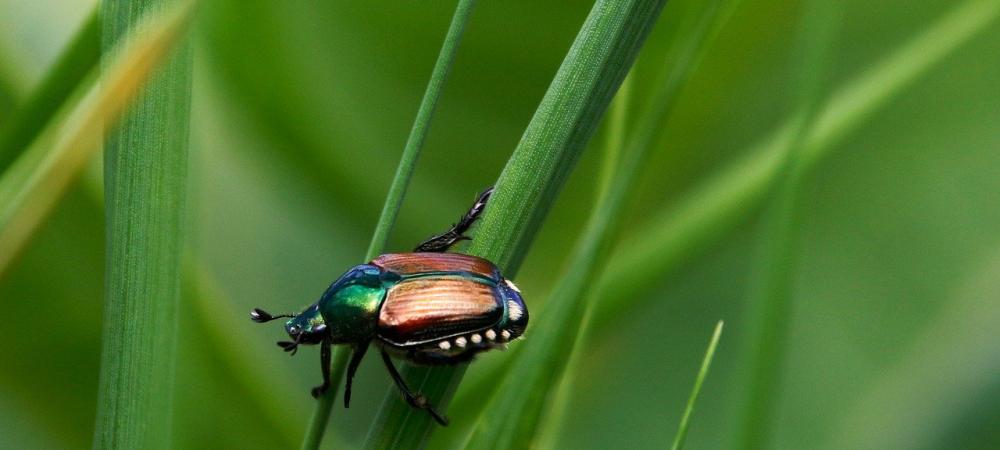The Ultimate Guide to Japanese Beetles: Everything You Need to Know

Have you ever seen a glittering green beetle munching on your plants and flowers? Beware, it may be the infamous Japanese beetle! These pests damage your garden and attract more of their kind. But don't worry. We've got you covered. If you are dealing with Japanese beetles or want to learn more about them, this ultimate guide is just for you. From understanding their lifecycle and habits to controlling and preventing them, we'll cover everything you need to know to keep your garden Japanese beetle-free.
How To Identify Japanese Beetles
Japanese beetles are small, metallic green insects with copper-brown wing covers. They measure about half an inch in length and have a distinctly oval shape. Their iridescent green bodies and shiny copper-colored wings make them easily recognizable. Japanese beetles also have small white tufts of hair along the sides and back of their bodies, further distinguishing them. These beetles are known for their elegant appearance. Still, their beauty belies their destructive nature, as they can quickly devour the foliage of various plants and wreak havoc in gardens and landscapes.
When Are Japanese Beetles Active
Japanese beetles typically emerge and become active during summer, particularly in late June or early July.
Sign of Japanese Beetles
Common signs of a Japanese beetle infestation include:
- Skeletonized Leaves: Japanese beetles feed on plants' foliage, leaving leaves with a lacy or skeletonized appearance behind. They consume the soft tissues between leaf veins, resulting in patches of missing tissue.
- Defoliation: Severe infestations can lead to extensive defoliation, where large portions of leaves are completely consumed by the beetles. This can weaken plants and impact their overall health.
- Brown Patches in Turfgrass: Japanese beetle grubs, which are present in the soil, feed on grass roots. This can cause brown or dead grass patches in lawns or other turf areas.
- Damage to Flowers and Fruits: Japanese beetles may also target flowers and fruits. They can consume petals, chew on flower buds, and damage ripe fruits, leading to cosmetic damage and reduced yield.
- Presence of Adult Beetles: Spotting adult Japanese beetles on plants clearly shows their presence. These beetles are about half an inch long, with a metallic green body and copper-colored wing covers. They are most active during the day.
- Increased Beetle Activity: During peak infestation periods, you may notice a significant increase in Japanese beetle activity in your garden or landscape. This can include the sight of multiple beetles feeding on plants simultaneously.
If you observe any of these signs, it is important to take action promptly to manage the Japanese beetle population and protect your plants from further damage.
How To Prevent Japanese Beetles
Preventing Japanese beetles from taking over your home and garden requires a combination of proactive measures and careful management strategies. Here are a few steps you can take to prevent Japanese beetles:
- Choose Resistant Plants - Opt for less appealing plants to Japanese beetles, such as marigolds, geraniums, and petunias.
- Install Physical Barriers - Use protective covers, such as netting or floating row covers, to shield vulnerable plants from Japanese beetles.
- Maintain Healthy Plants - Promote overall plant health by providing adequate water, nutrients, and sunlight.
- Handpick Beetles - Conduct regular inspections and physically remove Japanese beetles from plants. Drop them into a bucket of soapy water to eliminate them.
- Avoid Attractants - Avoid planting their favorite food sources near your home, such as roses, linden trees, and grapes.
- Encourage Natural Predators - Attract beneficial insects like birds, toads, and predatory beetles that feed on Japanese beetles.
As we have learned, these voracious pests have the potential to cause significant damage to plants, leading to defoliation, reduced yields, and an overall decline in plant health. Identifying and controlling Japanese beetles is crucial to minimize their impact and protect your green spaces. You can effectively manage Japanese beetles by implementing preventive measures, such as plant selection, physical barriers, companion planting, and utilizing organic or chemical control options when necessary.
Contact the Lawn Pest Experts
If you are experiencing an infestation of Japanese beetles or other lawn pests, you need the help of the experienced team of Charlotte lawn care experts at Tailor Made. Contact us today and see why we are the premier choice in lawn and pest services in the greater Charlotte area.
